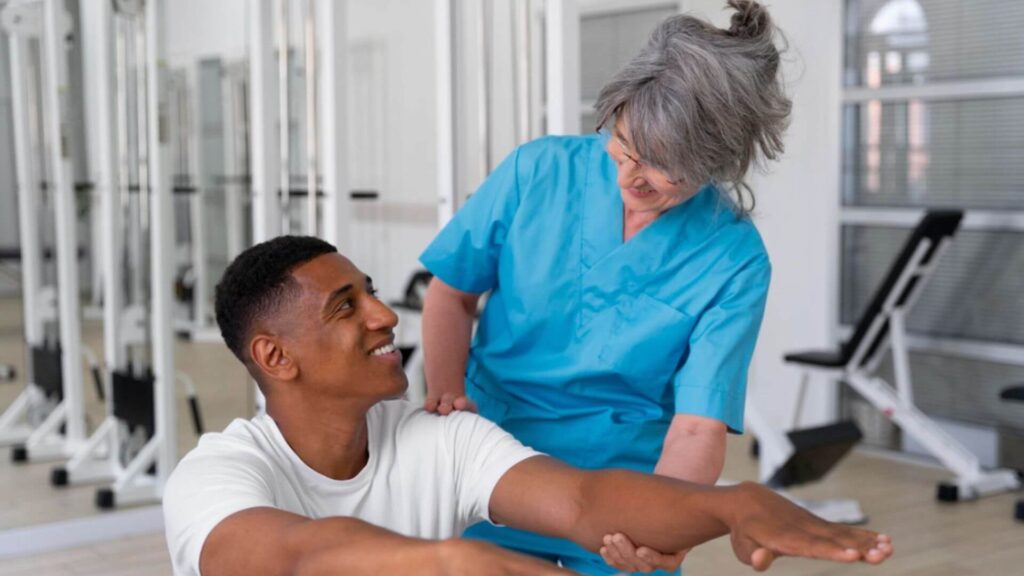Why we did the study: To see how much participants improved in a variety of post-hospital brain injury rehabilitation programs. We also wanted to see if outcomes (changes over the course of rehabilitation) were different for people with traumatic brain injury (TBI), stroke, or other types of acquired brain injury (other ABI).
What is post-hospital rehabilitation? Early rehabilitation in the hospital usually focuses on improving basic abilities like moving about, feeding yourself, and using the toilet. Post-hospital rehabilitation includes programs in which people work over longer periods of time to further improve their functional abilities so they can get back to their families, their homes and their community. In addition to continuing to work on basic abilities, post-hospital rehabilitation helps people improve higher level skills like communication, memory, managing emotions, and getting back comfortably to family, social, and community living.
How we did this study: We looked at how over 2,000 participants did in 6 different kinds of post-hospital brain injury rehabilitation programs: behavioral, residential, home and community, day treatment, outpatient, and supported living. These programs are described in greater detail elsewhere on the FABR website. Supported living programs are different than the other intensive rehabilitation programs because the goal of supported programs is not further improvement but rather to help participants sustain the progress that they made previously in rehabilitation. We measured progress using the Mayo-Portland Adaptability Inventory (MPAI-4) which measures basic motor and cognitive abilities, emotional adjustment and interpersonal interactions, and ability to participate in social and other community activities.
What we found: On the average, participants made a lot of progress over the course of rehabilitation in the intensive rehabilitation programs. Participants in supported living programs sustained the gains they had made previously. You can see how much people changed in the figure below. Lower scores on the MPAI-4 mean fewer limitations and disabilities.

As you can see in the figure, participants in some programs like Behavioral and Residential had more limitations (higher scores on the MPAI-4) when they started the program than people in other programs like Day Treatment and Outpatient. No matter how many limitations they had when they started the program or whether they had TBI, stroke or other ABI, they made progress in all the areas measured by the MPAI-4. In most cases, the improvement was great enough that it would make a real difference in their daily lives.
Take home points:
- Participation in intensive post-hospital brain injury rehabilitation helps people with TBI, stroke or other ABI make great progress in getting back to family and community living.
- Even participants with severe disabilities make excellent progress if they get into the appropriate type of program.
- They make enough progress that it can make a real difference in their daily lives and the lives of their families and other people they live with.
This summary is based on a scientific article published in a peer-reviewed journal. An abstract and the original article can be viewed through the link below: Salisbury DB, Parrott D, Walters GJ, McGrath C, Logan DM, Altman IM, Malec JF. Outcomes of Six Specific Types of Post-Hospital Brain Injury Rehabilitation Programs. J Head Trauma Rehabil. 2024 Jun 24. Epub ahead of print.
FABR (Foundation to Advance Brain Rehabilitation) is a one-of-a-kind alliance between leading brain injury rehabilitation organizations from across the United States to improve outcomes in the rehabilitation field. The partnership allows the organization to aggregate outcome data to launch the only know collaborative database in the United States that captures the impact of brain injury rehabilitation following acute care.

